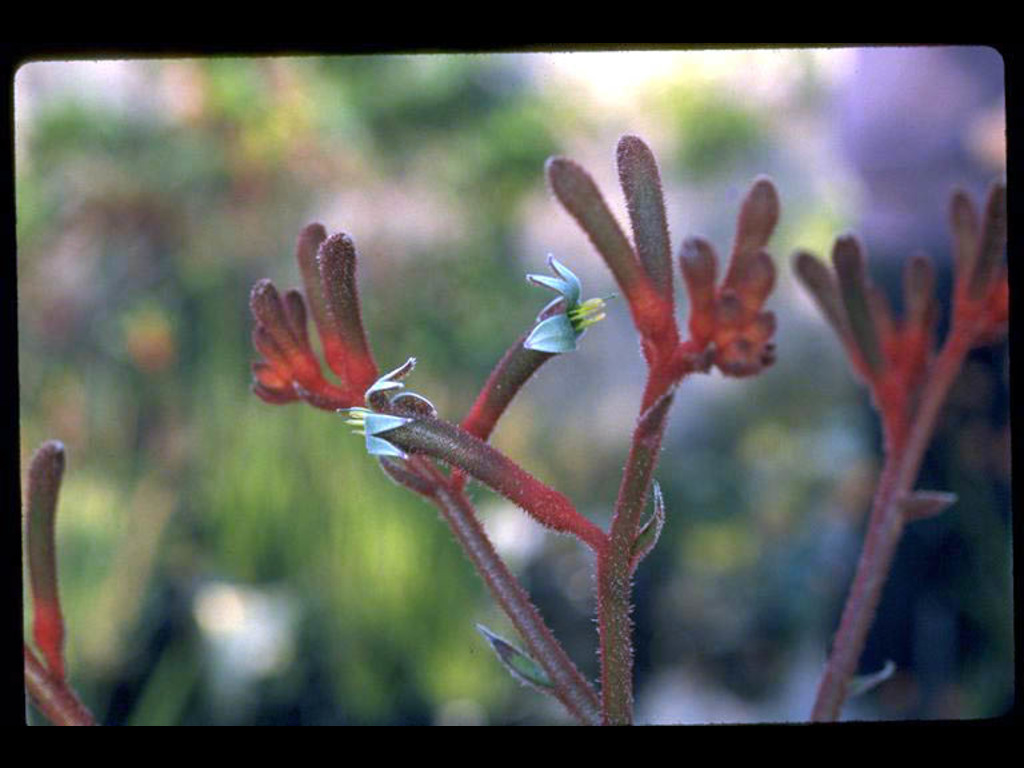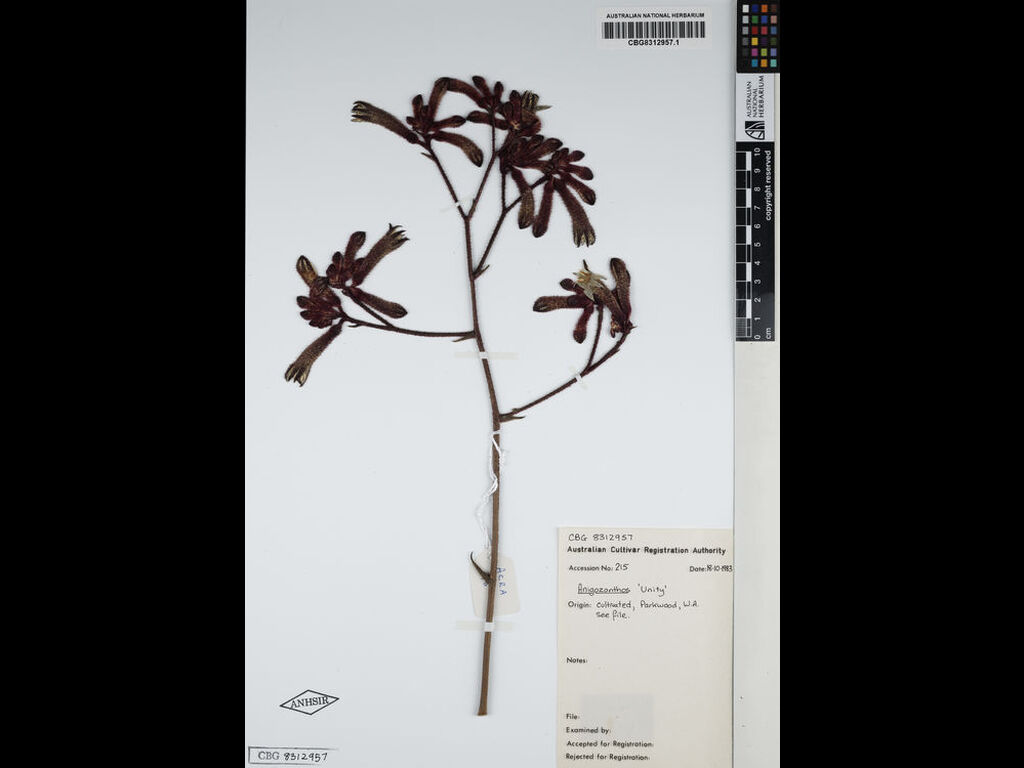Anigozanthos 'Unity'
- File Number
- 215
- ACRA Field Book Number
- 18
- Registration Date
- 19/10/1989
- Application Received
- 01/10/1983
- Family
- Haemodoraceae
- Cultivar Name
- Anigozanthos 'Unity'
- Origin
- Anigozanthos 'Unity' is a tetraploid, the result of a manipulated cross between A. rufus female and A. flavidus> male tetraploid. The cross was performed by Mr K Oliver of Western Australia. The cultivar was first received by the Authority in October 1983. Registration applied for by Mr K R Oliver.
- Characteristics
- Anigozanthos 'Unity' has flower stems to ca. 1.5m tall, mostly glabrous with a few scattered plumose purple hairs becoming more dense towards the flowers. The flowers are in simple racemes on pedicels to ca. 6mm long. The woolly hairs on the ovary are red with some black tips. The hairs become less dense towards the perianth lobes allowing equal dominance of yellow green hairs. The perianth tube is ca. 40mm long, glabrous inside above the middle and with simple hairs below the middle some of these with sellate tips. The perianth lobes are ca. 10mm long with plumose silvery grey hairs inside. The anthers are about the same length as the filaments, the connective tipped with a small gland-like appendage. There are ca. 5 ovules per locule. Diagnosis: The flowers of Anigozanthos 'Unity' are similar in shape to A. rufus but are longer with a slightly more prominent ovary. The flowers are a much darker red than A. rufus and less uniform in colour with the upper half of the tube showing yellow green hairs more the colour of those in A. flavidus. Unlike A. flavidus, the stems of Anigozanthos 'Unity' are hairy but the hairs are darker and there are more of them than in A. flavidus and they are fewer than in A. rufus. There are two other cultivars form the same hybrid cross. Anigozanthos 'Red Cross' and Anigozanthos 'Velvet Harmony'. Anigozanthos 'Red Cross' is of a similar height with individual flowers ca. 30mm long. It is most easily distinguished from Anigozanthos 'Unity' by the presence of a very distinct bright yellow patch at the base of the flower. Anigozanthos 'Velvet Harmony' has flowers with a tube ca. 25-27mm long which appear a darker colour due to the thicker hairs on the perianth. The flower stem is also more branched in Anigozanthos 'Velvet Harmony'.
- Cultivation
- Anigozanthos 'Unity' has been in cultivation since 1969 and has proved to be unpalatable to snails and is one of those least susceptible to Ink Disease. It is usually fertile but seedlings are subject to a great deal of variation, therefore vegetative propagation must be used to ensure the cultivar's features are retained. It is semi-hardy during drought. The degree of frost hardiness has not been determined. The flowers are produced from October to December in WA.
- Publication
- Australian Cultivar Registration Authority (1993), Australian Plant Cultivars. Australian Plants 17(134): 54
- Colour Coding
- RHS Colour Chart 1966.plumose hairs: red purple group 59A.perianth tube: yellow green group 145B.anthers: yellow orange group 22B.stems: yellow green group 144A.
- Propagation
- Division or tissue culture
- Applicant Name
- K. Oliver
- Uses
- As part of a mass planting or mixed in a shrubbery, or as a spectacular feature plant. Attracts nectar feeding birds.
- Availability
- Unknown
- ANBG Accession Numbers
- ACC215; ACRA018; CBG8312957.
- NSL ID
- -

